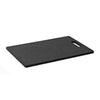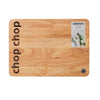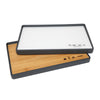- No products in the cart.
A guide to wholegrain gluten-free flours in baking
10
Feb
Gluten-free baking is a tricky business. There is no one simple solution or explanation for substituting gluten-free flours for flours that contain gluten in your baking.
The main thing to remember is that gluten-free flours behave differently than wheat flours (and other gluten flours) so don't expect the results to be the same. Your baked goodies will be different. Often they won't resemble the 'classic' version that is made with a gluten flour, but that's OK and the sooner you let go of any 'expectations' of how your gluten-free baking should 'be' the better.
The following list is simply an introductory guide to four of the main gluten-free wholegrain flours available and when and how they are best incorporated into your baking. These wholegrain flours provide bulk, body and structure when used in baking but are also best used in conjunction with what's known as gluten-free 'white flours' or 'starches' (such as arrowroot, cornflour, sweet rice flour and potato starch just to name a few) - but more on this another time.
Buckwheat flour has a distinctive strong earthy flavour, has the ability to absorb a huge amount of liquid and has a sticky texture once moisture is added. Because of this it is generally best used in moderation with other flours (such as rice and cornflour), or used in recipes that have strong flavours to complement it. Buckwheat flour is good to use in pastry, muffins and other quickbreads such as scones and banana bread.
Quinoa flour is a very nutritious gluten-free flour (thanks to its high protein content). It is a wonderful flour to use in baking but due to its strong, slightly bitter flavour and aroma is best used in recipes with strong flavours to match it (such as chocolate and coffee) and in conjunction with other gluten-free flours. It is great to use in biscuits, slices, brownies and muffins.
Rice flour (brown and white) is made from finely ground rice. Brown rice flour has a great nutty flavour. Rice flour is a key component in most pre-blended gluten-free flour mixes, but with some of the 'softer' flours/starches, such as cornflour. arrowroot or potato starch and is good to use in sponges, pastry and some breads.
Sorghum flour has a sweet nutty flavour, is light in texture and is often sold as 'sweet white sorghum flour'. It's texture and flavour is one of the closest to traditional wheat flour and is a brilliant gluten-free flour to use in baking, particularly breads and quickbreads such as muffins.
Image (clockwise from top left): brown rice flour, buckwheat flour, sorghum flour, quinoa flour.
Blog contributed by Anneka Manning of BakeClub.











